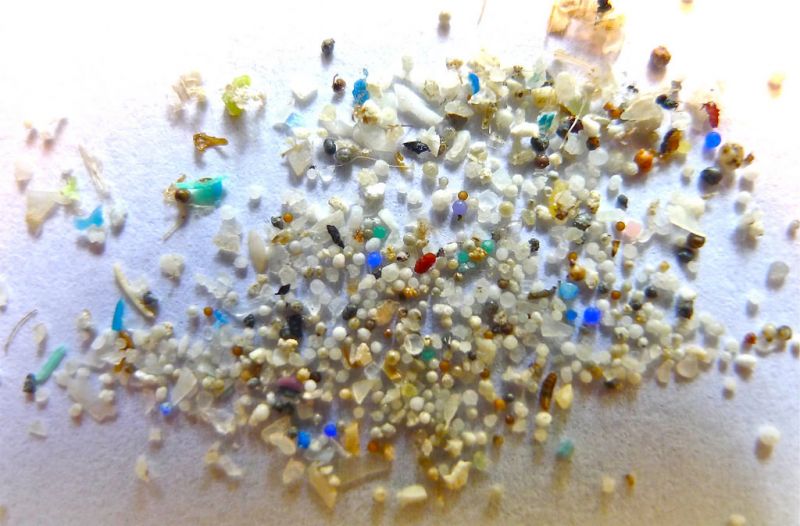Humans At Risk of Ingesting Microplastics Through Drinking Water
Published on by Water Network Research, Official research team of The Water Network in Academic
Humans are at risk of ingesting micoplastics by eating fish including trout and salmon or swallowing the tiny particles in water, new research shows.

The Environmental Protection Agency (EPA) says the waste industry and water treatment plants are among the biggest sources of microplastics in the environment, and that 24 species of molluscs, fish, birds, mammals and crustaceans can be affected if they ingest the tiny plastic particles.
Defined as particles less than 5mm in diameter, microplastics are formed either through the breakdown of large plastic particles or through intentional production for products such as cosmetics and cleaning agents.
Many become trapped in wastewater treatment plant sludges, and land-spreading on agricultural land poses risks to ecosystems. The Government is proposing a ban.
New research funded by the EPA provides data and evidence on the sources and scale of microplastic pollution in Irish freshwaters for the first time.
The ‘Scope, Fate, Risks and Impacts of Microplastic Pollution in Irish Freshwater Systems’ report was led by researchers in the Marine and Freshwater Research Centre at Galway Mayo Institute of Technology (GMIT), and suggests that the best way to tackle microplastic pollution is to remove it at source rather than address it after pollution occurs.
Among the main sources include the plastics manufacturing and recycling industries, landfills, urban wastewater treatment plants, septic tanks and the sewage sludge/biosolids derived from such plants.
“Urban wastewater treatment plants were identified as one of the largest point sources of microplastics in the current study and were found to be receiving microplastics from a number of different sources”, it says.
Dr Anne Marie Mahon, from GMIT, said that spreading wastewater sludge onto agricultural land could pose a risk to human health.
“In addition to microbeads washed into the sewer from the use of personal care products, synthetic fibres from clothing transported in washing machine wastewater are another significant contributor of microplastics found in urban wastewater treatment plants.
The study highlighted a number of potential risks to humans arising from exposure to microplastics in drinking water, consuming freshwater fish such as salmon or trout which have been exposed to or have ingested microplastics, or accidentally swallowing contaminated water while swimming or bathing.
The study highlighted a number of potential risks to humans arising from exposure to microplastics in drinking water, consuming freshwater fish such as salmon or trout which have been exposed to or have ingested microplastics, or accidentally swallowing contaminated water while swimming or bathing.
Read more: Irish Independent
Media
Taxonomy
- Drinking Water Security
- Water Pollution
- Drinking Water Treatment
- Micropollutants
- Environment
- Pollution
- Water Pollution Control
- Drinking Water
- Groundwater Pollution
- Polymers & Plastics
- Plastics
- Pollution
1 Comment
-
We ARE ingesting microplastic - no doubt.